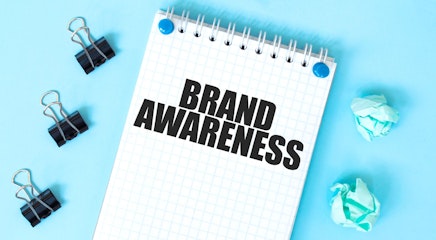Exhibition stands vary a lot in price, and the reasons for this aren’t always completely clear. One of the biggest cost considerations that suppliers often don’t mention is the quality of media (material) the display is printed on.
To make this process easier, we have summarised the advantages and disadvantages of the primary media types for display stands below, including a table of the features of each material type.
Types of media
Polyester-Based Media
Whilst there are a wide variety of polyester-based media types available, in general they offer an excellent-quality print. However, this quality comes at a cost – usually they are more expensive than PVC or Polypropylene.
Polyester-based media types are really only used for indoor applications such as banner stands, pop up displays, light box graphics and general display graphics.
Advantages
Dimensionally stable (anti-curl media)
Highest quality print
Available with stoplight backing (grey back)
Available with a backlit film
Heavyweight medias available making it ideal for pop up displays (300 micron+)
Disadvantages
Expensive
Difficult to source in widths above 1524mm

Polypropylene
Polypropylene is a widely-used lower cost alternative to polyester-based materials. It generally has a mid-range cost between PVC and polyester based materials.
Polypropylenes are mainly used for indoor applications such as banner stands, posters, graphic wraps and general display graphics.
Advantages
Fairly low cost
Available with stoplight backing (grey back)
Disadvantages
Some anti-curl properties but not as stable as polyester-based materials
Difficult to source in widths above 1524mm
Note on Microns: Polyester-based and polypropylene are often characterised by the number of microns they have. A micron is a micrometre, which is 1×106 of a metre; the higher the number of microns, the thicker the media is.
150-200 microns is a good level of thickness for banner stands, whilst pop up display stands should be at least 450 microns, whilst some suppliers offer materials around 600 microns for an even more durable pop up display.

PVC
PVC is used for a wide range of products but is ideally suited to outdoor applications like PVC/Vinyl banners. There are a wide range of PVCs available but in general they are fairly low cost compared to polypropylenes and polyester-based materials as it’s a fairly basic material.
PVC is generally used for outdoor banners, wider banner stands and lamp post banners.
Be wary of exhibition stand suppliers who use PVC for cheap indoor stands, they are probably using a poor-quality PVC that will curl and possibly tear easily.
When looking at PVC products, you may be able to choose different variables – here is a quick definition of these terms. For more info on all of these terms, please see our exhibition stand glossary.
Types of PVCFrontlit PVC: This is the most widely used type of PVC and is best suited for light to illuminate the front of the graphic.Backlit PVC: This material allows more light to pass through the reverse side making it suitable for use in outdoor lightboxes.Mesh PVC: This is a perforated material so wind can pass through it, meaning it is more suitable for windy areas.Blockout PVC: This material is ideal for double-sided printing as it blocks any light passing through due to a blockout layer in the middle of the material.Advantages
Low cost
Durable for outdoor use
Available in extremely wide widths eg. 5 metres
Disadvantages
Huge variety of grades available meaning poor-quality products can be produced by suppliers opting for price over quality
Doesn't contain anti-curl properties
Note on GSM: GSM stands for grams per square metre. In theory the higher the GSM, the more durable the media, however if the core material is weak it will not be heavy duty.

Fabric
There are a huge variety of fabric types available to suit almost any indoor or outdoor application. So in terms of versatility, fabric is the best choice!
However, the price of fabric display products can be high - about the same as some polyester-based materials - due to the complex finishing process.
There are also a number of different ways of printing fabrics, which can affect the final result in terms of print quality. Fabrics can be printed on Solvent, Latex, UV or Dye Sub machines with varying results. Dye Sublimation printers achieve by far the best results and Solvent printers probably the worst, with Latex machines somewhere in the middle.
Advantages
Wide variety of applications due to large array of different fabric types
Wide roll widths available mean seamless prints of almost any size are available
Graphics can be folded making them easier to transport
Disadvantages
Can be expensive
Folded graphics can crease, (although handheld steamers can remove these)
Print quality can vary depending on the printer used to produce the graphics

Types of printer
As with the various types of print media, the printer for the display is also highly important.
Aqueous/water-based printers produce a finer level of print as they can produce smaller ink dots which are less visible to the human eye. They are generally used to print indoor display stands.
Solvent-based printers often produce a less-detailed print, where the ink dots may be visible up close. However these types of printers are better for outdoor display stands, as the ink is more weatherproof.
UV printers use UV-curable inks. Mainly utilised for indoor applications on flexible or rigid materials.
Latex printers use a water/latex-based ink. Produces a high-quality, detailed print for indoor and outdoor usage.
Dye-sublimation printersuse heat to transfer dye onto print material. Used for fabric printing indoor or outdoor.
Need some more information?
Display Wizard produce all our display stands on high-definition HP aqueous-based printers for indoor displays and also use a top quality latex-based printer for outdoor use. We are always happy to hear about any specific requirements you might have for your display stand, so please get in touch with our expert team if you require any top-quality advice!
posted in Buyer's Guides
Share this Event







